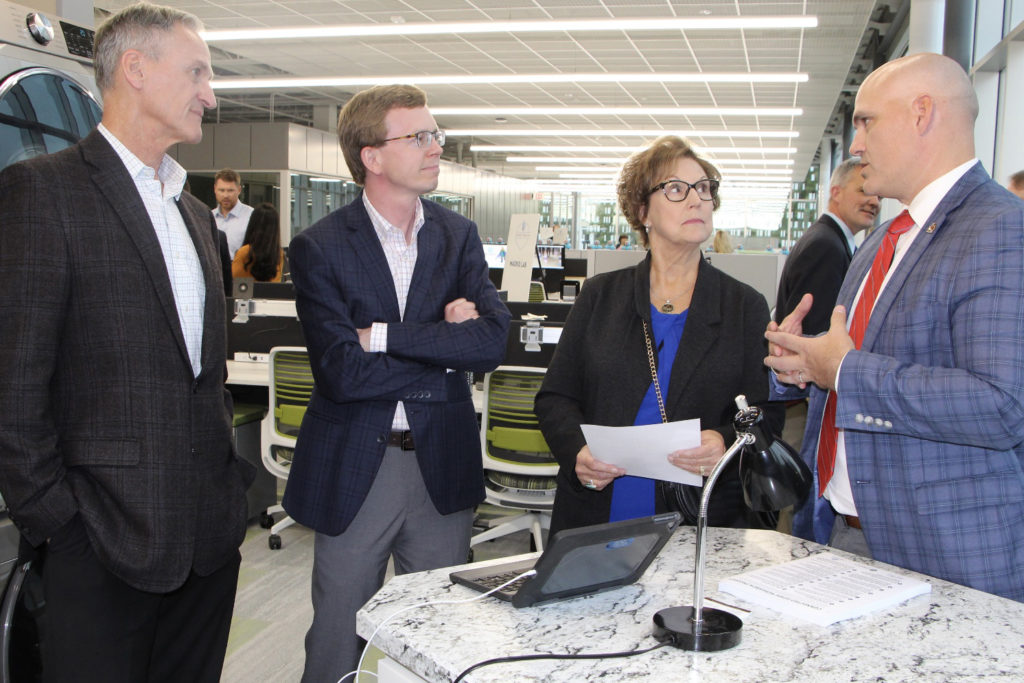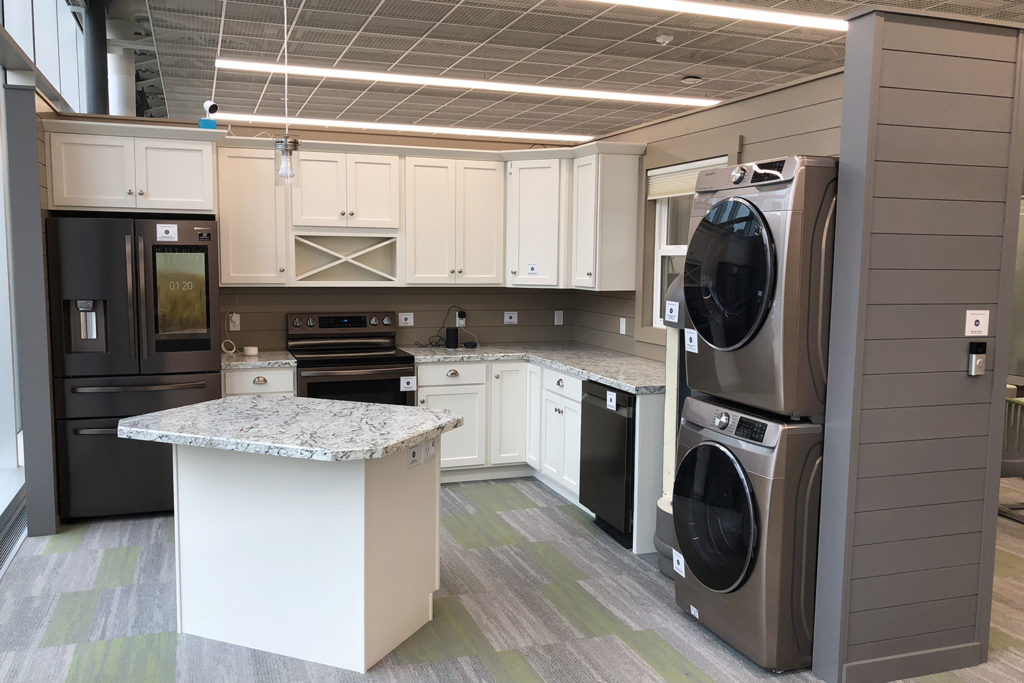
A partnership between NRECA and a South Dakota co-op to develop a utility-connected home took a big step forward this month as Dakota State University launched a Connected Home Research Project at its new Cyber Labs center.
The university, a national leader in technology and cybersecurity education, is collaborating with NRECA and East River Electric Power Cooperative in Madison to create a “home hub” that would allow the growing number of smart devices in consumers’ homes to communicate with co-ops to save energy and money.
“From WiFi thermostats to smart appliances, our network of electric cooperatives is seeing increased adoption of smart-home technologies among consumers,” said Chris Studer, chief member and public relations officer for the generation and transmission co-op, which provides 25 member co-ops with wholesale power in eastern South Dakota and western Minnesota.
“While current technologies can help manage electricity usage and benefit consumers, we noticed a gap between the capabilities of those technologies and the needs of our utility network to connect to those technologies,” he said. “We hope to close that gap through this project.”
Studer and Brian Sloboda, NRECA’s director of consumer solutions, announced the project in March at NRECA’s annual meeting in Orlando, Florida. NRECA and East River are splitting the $54,000 cost of the research and the co-op is spending another $12,000 to $14,000 on appliances, cabinets and technology at the university’s lab, Studer said.
As part of the TechAdvantage Expo at the annual meeting, NRECA set up a model of a utility-connected home, featuring wireless doorbell cameras, keyless door locks, security sensors on the windows, a thermostat controlled by a smartphone app and other smart devices.

A home hub would give co-op consumer-members a dashboard they could use to decide what priority to place on comfort, cost savings and renewable energy, Sloboda explained at the meeting. The hub would help a co-op learn a member’s preferences and make energy adjustments depending on when the consumer regularly takes showers or turns on the lights, he said. The co-op could turn off the water heater when the consumer is away or shut off lights in an empty room. Those energy-efficiency measures would save money for co-op members and help the co-op reduce demand for power during peak periods.
Researchers at Dakota State University will examine smart-home products that are currently on the market to figure out how utilities might use existing technologies to control appliances and other devices in members’ homes, Studer said. They also will explore ways to build utility-specific technologies that could optimize a home’s energy usage and control power costs. In the final stage of the project, researchers may perform field tests of potential products in consumers’ homes.
“As use of smart-home technology continues to increase among consumers, we’re hoping to use this research project to identify technologies that will help us in our transition to a new energy management future,” Studer said. He noted that any new technology that is developed can be replicated at other co-ops throughout the nation.
The project’s research space at the university’s new Madison Cyber Labs center—also known as MadLabs—looks like a smart-home kitchen. It features other smart products, including lighting, window coverings, home security, a washer and dryer, and a water heater. Researchers will likely add more technology to the lab as the project progresses, including an electric vehicle charger and smart locks.
Erin Kelly is a staff writer at NRECA.